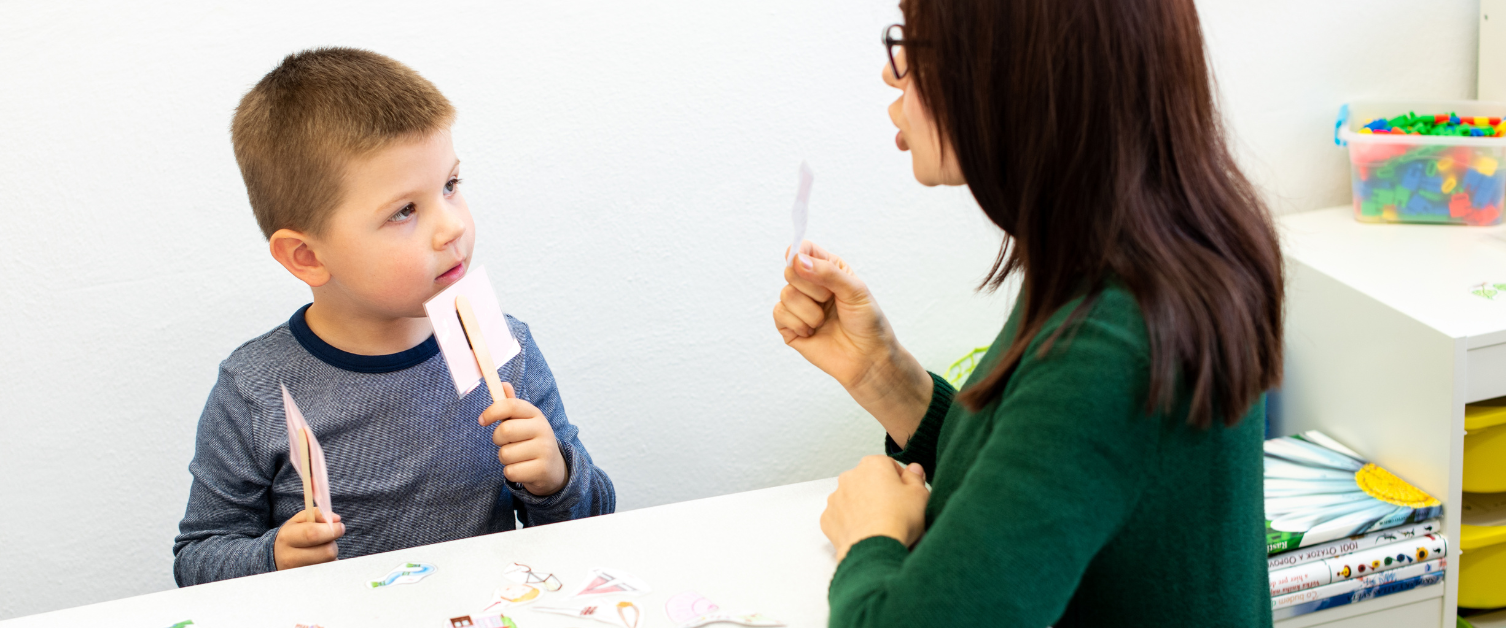Speech anxiety

Some children are naturally quiet and these children will be described as having a shy or quiet personality at home and in other settings. If you notice a child isn't speaking in your setting, however, you should not assume that they are simply a quiet child without talking to parents first. If a parent tells you their child is not quiet at home then it is likely that the child’s quietness in your setting is because they are worried, anxious or scared about talking.
It’s important to understand that children who experience anxiety around speaking do want to talk, however, they fear the act of speaking. They can become ‘frozen’ when they try to speak and some children say they feel a blockage in their throat, which stops their voices coming out. This specific phobia or fear of speaking is known as Selective Mutism.
Early Identification is key
We do not want children to feel anxious, worried or have negative feelings towards talking for any longer than necessary. Children want to communicate and so if you notice that a child only speaks very little or not at all, it should not be ignored.
- Some of the most common signs of speech anxiety include;
- Freezing and becoming suddenly still when required to speak in certain situations
- Avoidance of situations where they may be expected to speak
- Withdrawing from spontaneous play and vocalisations
- Becoming excessively withdrawn and shy
English as an Additional Language (EAL)
Generally, it is acceptable that bilingual children will need longer to develop into confident talkers in a new language environment, however, you would still expect to hear these children speaking in their home language or to be communicating using non-verbal means. Please don’t ignore signs of speech anxiety in children who have English or Welsh as a second language.
What can you do to help?
Put them at ease. A child you believe to be showing signs of speech anxiety needs to be put at ease. Having a chat to reassure them that you know they want to talk, but are finding it difficult can help to ease those initial pressures.
- No pressure. Do not place pressure on the child to talk and re-assure the child that they will not be put under pressure to speak.
- Relaxed atmosphere. Create an atmosphere that is relaxed and friendly around the child.
- Build rapport. Do things that the child enjoys and use their favourite toys and activities.
- Alone time. Try to find time for periods of one to one play. It may be useful to allocate a key worker to spend more one on one time with the child to help build trust and confidence.
- Smile. Present a reassuring and smiling face. Let the child know that you enjoy being with them through comments such as ‘this is fun’. Crucially, show the child that you are interested in them, not just them talking.
- Commentary style talking. Children who are anxious about speaking love to be around people who are happy to do all of the talking. Keep talking and commenting about what the child is doing as this help the child feel at ease.
- Reduce questions. Rather than asking the child direct questions comment on what they are doing, for example, ‘what have you drawn?’ say ‘I really like the trees you’ve drawn!’ If you do accidentally ask a direct question and the child doesn't answer, answer it yourself or side step by saying ‘let’s decide later’.
- Create talking opportunities. Make opportunities for the child to speak rather than placing demands on them e.g. ‘Hmm what piece of track should I be using next?’ pause ‘I can’t find a round piece anywhere!’
- Be positive. Respond positively to any attempts made by the child to communicate either verbally or non-verbally. If a child responds to you non verbally e.g. nods head, reply as if they have spoken to you.
- Make exceptions. Make hands-up, thumbs-up or eye contact and a nod generally acceptable at registration if the child is struggling to answer.
- Normality is key. If the child does talk, treat this as part of normal or usual interaction. Do not draw attention to the fact they have spoken.
- Be open and honest with parents. The child speaks at home and so parents may not know there are any difficulties with speaking in school. Parents will play an important role in developing their child’s confident speaking and so it’s important to keep them updated.
What doesn't help?
- Asking direct questions. Asking direct questions will put the child on the spot, especially if other people are watching and waiting for an answer.
- Looking and waiting. Try to avoid looking directly at the child when you are hoping that they might say something.
- Using pressure or bribery. Trying to persuade or bribe the child will only cause the child to feel more anxious and afraid of talking.
- Using Punishments. The child should not be punished or disadvantaged for not speaking, for example, missing playtime because they didn't answer a question at circle time.
- Making it your mission to get the child to talk. Reluctant talkers will make the most progress in a pressure free environment.
- Treating them differently. Try to have fun as you would with everyone else.
- Dwelling. Don’t focus on what the child can’t do. Instead, offer plenty of opportunities.
- Reacting when the child does talk. Although it can be difficult, try to carry on as if they have always spoken, responding positively to what they say, rather than the fact they spoke.
- Talking about the anxiety in front of the child. Try to hold meetings in private where the child can’t hear you discussing their difficulties with speaking in school.
Please try not to be hurt or offended if the child remains silent. Be patient and understanding and preserve with the strategies above.